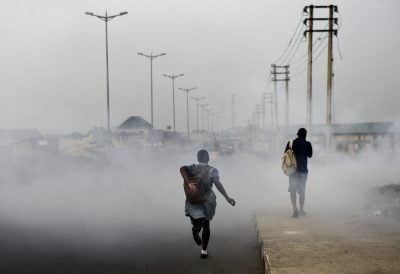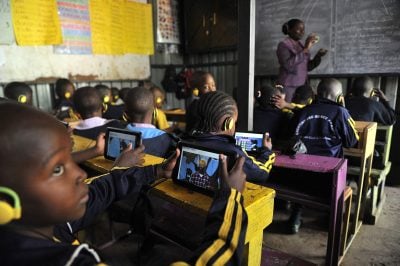With mobile penetration rates in Africa now standing at around 60%, most of the continent’s myriad operators are focusing on consolidating their operations and expanding the scope of services they provide. Nevertheless, penetration rates in some African countries, for example, Chad, Eritrea and even DR Congo, are still below 20%, thereby offering considerable potential for growth. Where the mobile markets are near saturation, the focus is now on providing greater, and more affordable, G3 and G4 coverage through smartphones and in effect, bypass the use of PCs for internet connectivity. The industry itself continues to display considerable activity with a slew of mergers, acquisitions and rebranding. Survey written by associate editor, Neil Ford.
After a decade of massive growth, the African mobile telecoms sector is entering a period of consolidation and reorganisation. Although the citizens of half a dozen African countries still have very limited access to telecoms, the era of rapidly increasing penetration rates is coming to an end. Competition has driven down tariffs in most markets, thereby reducing average revenue per user (ARPU), so most operators are banking on the introduction of new services to generate more income and sustain what has been the most dynamic part of the African economy since the dawn of the new millennium.
There are about 644m subscribers in Africa at present, resulting in a penetration rate of about 60%. According to the 2012 African Mobile Factbook, global mobile phone penetration now stands at 85%, so Africa still stands some way behind the global average. Figures vary but most estimates agree that there will be 1bn mobile phones in Africa sometime around 2016-17, which should ensure that most Africans have mobile phones, even if a significant proportion of the population have two or more handsets in order to differentiate their personal and work lives.
Brahima Sanou, the director of the International Telecommunication Union’s (ITU) Telecommunication Development Bureau, said: “The past year has seen continued and almost universal growth in ICT [information and communications technology] uptake. The surge in numbers of mobile broadband subscriptions in developing countries has brought the internet to a multitude of new users. But despite the downward trend, prices remain relatively high in many low income countries. For mobile broadband to replicate the mobile cellular miracle and bring more people from developing countries online, 3G network coverage has to be extended and prices have to go down even further.”
Slower growth in penetration rates may encourage merger and acquisition (M&A) activity. Global M&A action was frantic around the time that Vodafone became the global market leader but has slowed down somewhat in recent years, as operators have sought to concentrate on increasing their ARPU after laying out vast sums in acquiring 3G licences.
India’s Bharti Airtel bought its African assets from Zain in 2010 but there still appears to be considerable scope for takeovers in the near future and it would be no surprise if the number of major players decreased over the next few years. Airtel itself is considering merging its Africa and Indian operations, partly because the former continues to make a loss. The company has conceded that it will probably not meet its $5bn revenue target for its African business for the 12-month period up to March 2013.
Some telecoms industry commentators have suggested that Africa could become the first post-PC continent. There is certainly merit in this argument as landline infrastructure was very slow to develop in Africa by global standards and appears to have been leapfrogged entirely by mobile telecoms in some countries. The promise of higher capacity mobile internet access has persuaded many that some of Africa’s biggest markets are ready for the 4G revolution. In short, 4G technology provides ultra broadband internet access, which enables high speed communications at high mobility. For instance, it allows people to access movies, gaming service and video conferencing via their mobile handsets and while on the move. About 18% of all mobile phones in Africa are smartphones and this figure is steadily increasing, although the continent has more basic handsets than anywhere else in the world.
While BlackBerry has suffered from increasing competition in its established markets, its smartphones are becoming more popular in Africa. BlackBerry manufacturer Research in Motion (RIM) has opened a retail store in Nigeria where it enjoys a 50% share of the local smartphone market. The outlet, which has been developed in association with local retailer Slot Nigeria, has been opened at Computer Village, Ikeja. Despite the company’s focus on Nigeria, its African headquarters remains in Johannesburg. Global marketing of other smartphones is likely to drive down prices in Africa and Google has already set a target of selling 200m of its Android phones on the continent.
Improved services for Nigeria
There has been some debate over whether Nigerian telecoms operators should make steady improvement in mobile capacity or seek to leapfrog technological stages. ZTE has announced that it will now work alongside Etisalat in Nigeria on improving 3G services. ZTE business consultant Ahtasham Rabbani told a workshop in Abuja: “To survive in the big data era, operators need to size the business model and build a strong, smart and cost efficient network. To develop the 3G connections involves a terminal strategy and hi-tech services. The 3G package needs to be explored a lot in Nigeria.”
However, Etisalat, based in the United Arab Emirates, must continue to compete with bigger players in the Nigerian market, including Nigeria’s own Globacom and MTN of South Africa. Nigeria has overtaken South Africa as the continent’s biggest telecoms market and the number of subscribers is likely to break through the 100m barrier in the near future. Of course, many more prosperous Nigerians hold multiple subscriptions and so there is still scope for further growth in a population of about 150m.
MTN Group has announced that it will spend R7bn ($114m) on improving its South African operations in 2013. The 40% rise on last year’s figure seems to be designed to help fund the launch of 4G technology in the country’s biggest cities, despite the fact that 3G currently stands at just 65%. On 10th October, Vodacom, majority owned by the UK’s Vodafone, launched its first commercial 4G long-term evolution (LTE) service in South Africa. LTE, which is one of the main 4G standards, has been launched in Johannesburg, with other urban areas to follow.
The new chief executive of Vodacom, Shameel Joosub, said: “Vodacom was the first network in South Africa to test 4G LTE more than two years ago, and since then we have been busy upgrading base stations and our fibre-optic transmission network in preparation for today. It is great to claim another South African first and even more pleasing that South Africa has joined an exclusive club with the fastest mobile connectivity on offer.”
Vodacom now has more than 50m subscribers in Africa. It is the biggest operator in South Africa but rival MTN Group is the bigger across the African continent as a whole. However, Vodacom is looking to expand. Joosub commented: “We are more confident about more expansion opportunities. We do have an appetite to go, more than previously.”
Cell C, South Africa’s third-biggest operator after MTN and Vodacom, is the latest to cut its prices in a bid to increase market share. Its current initiative is attracting 700,000 new customers a month, most of them pre-paid subscribers, taking its subscriber base up to 9m, or 13% of the market, by September.
The former chief executive of Vodacom, Alan Knott-Craig, took the helm at Cell C in May and is using $180m from shareholders to improve geographical coverage. He commented: “We would have to raise some more, but it is not new money to be raised, it is money that was already being arranged. One thing is sure, we would have to spend some money to make more money. Job number one at Cell C is fixing the company, and the company needs a lot of fixing.”
Despite the financial benefits of an active telecoms sector, conflict between operators and governments occurs in many countries. For instance, the Rwanda Utilities Regulatory Agency (RURA) announced in September that it would fine MTN Rwanda, which dominates the domestic market, for poor quality “on call completion rate, speech quality, signal strength and other measures”. Rwanda has 4.9m mobile telecoms subscribers, including 3.1m MTN Rwanda customers, as the market continues to grow rapidly.
The number of subscribers in Rwanda increased by 50% in 2010 alone. However, MTN disputes the imposition of the RF3m ($4,767) a day fee for each day of alleged poor service, arguing: “despite hitches that sometimes might be beyond our control – like fibre cuts, our network is operating within all key performance indicators in our licence obligations”. Tigo Rwanda, which is owned by Millicom International Cellular, has also been warned about its services but not fined.
Whatever the merits of the RURA argument, Kigali’s strategy of turning Rwanda into an IT hub is certainly yielding benefits in terms of infrastructure and education levels. In its recent Measuring the Information Society 2012 report, the ITU calculated that Rwanda had the most improved information and communications technology (ICT) in Africa over the previous 12 months.
The survey, which considered levels of ICT access, skills and use, ranked the Seychelles as the best-equipped ICT nation on the continent, followed by Mauritius, South Africa and Cape Verde, in that order. Although not all African states were assessed, the performance of Congo-Brazzaville had declined most and Niger had the worst ICT sector overall of those countries that were analysed, followed by Chad, Central African Republic, Eritrea and Burkina Faso.
By its very nature, the telecoms sector enables companies from many different countries to invest in different markets. This prevents any one region from dominating. The mobile telecoms market is one sector where Chinese companies have not entered Africa en masse. Nevertheless, the Ethiopian Communication and Information Technology Company announced that it had awarded a $1.3bn contract to upgrade its telecoms infrastructure to ZTE and Huawei Technologies. A spokesperson for the Ethiopian firm said: “Both companies will be engaged… and will have a share in the market. They will finance the project aimed at doubling the number of mobile-phone users to 40m by mid-2015.”
Want to continue reading? Subscribe today.
You've read all your free articles for this month! Subscribe now to enjoy full access to our content.
Digital Monthly
£8.00 / month
Receive full unlimited access to our articles, opinions, podcasts and more.
Digital Yearly
£70.00 / year
Our best value offer - save £26 and gain access to all of our digital content for an entire year!
 Sign in with Google
Sign in with Google 


